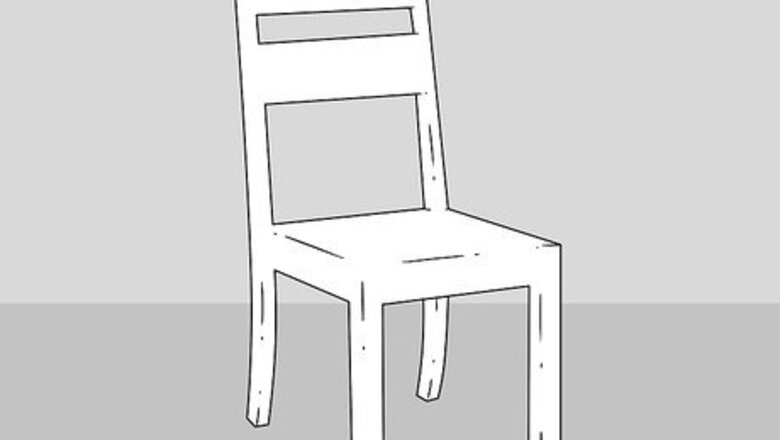
views
X
Research source
Starting Slowly
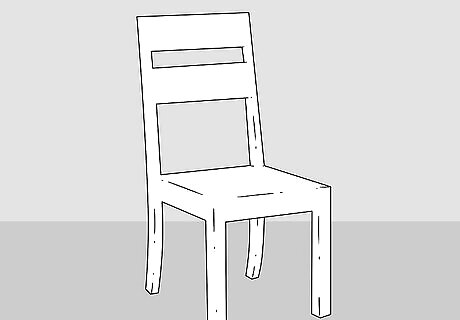
Find a sturdy chair. To do an abs workout on a chair, you need a flat, stable chair without arms. A dining room or kitchen chair works well – avoid chairs with wheels because they aren't stable and can roll out from under you. If you only have access to chairs with wheels, see if you can lock the wheels to keep the chair from moving. Putting it against a wall may also help.
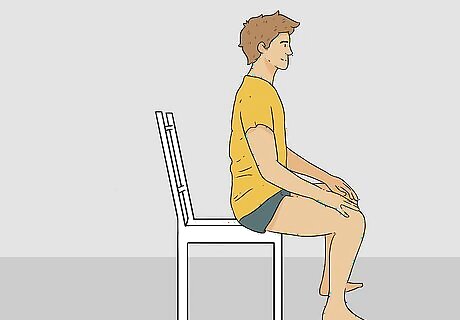
Sit at the edge of your chair. Take a moment to ensure you have proper posture with your shoulders back, your shoulder blades pressed down alongside your spine. Sit on your sitting bones, not your tailbone. Your knees should be bent at roughly right angles with your feet flat on the floor. If you're not able to do this, your chair may not be the correct height. Take a moment to get comfortable in this position and connect with your breath. Take a couple of minutes to breathe deeply, in through your nose and out through your mouth.
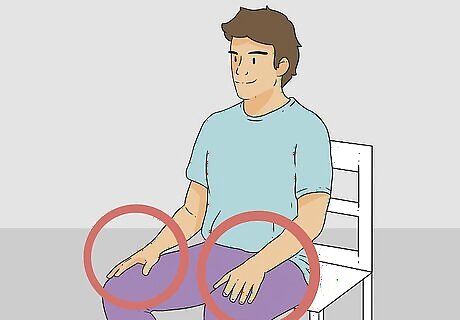
Place your arms by your sides. Pin your arms firmly to your sides, and rest your hands on your thighs. Make sure you are positioned slightly in front of the back of the chair. Your back should not be right up against the back of the chair.
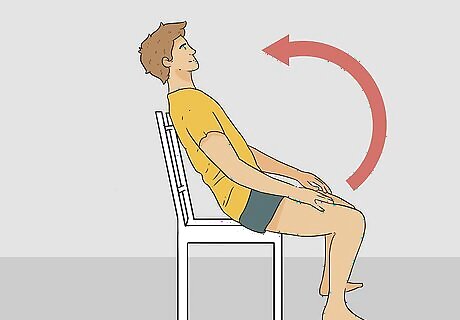
Lean back in your chair. Contract your abdominal muscles and lean back until you are almost touching the back of the chair. Your shoulders may graze the back of the chair, but be careful not to put any weight on it. Be sure to keep your back as straight and flat as possible. Keep your shoulders back and your shoulder blades in line along your spine.
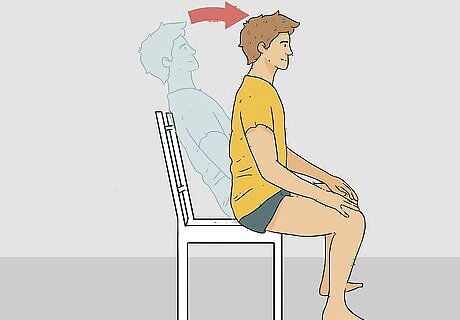
Rise slowly back to an upright position. Engage your abdominals and raise yourself to your original position, keeping your back flat and straight. Sit up in a slow, steady movement. Do 10 repetitions of this exercise while focusing on your breath.
Working Your Obliques
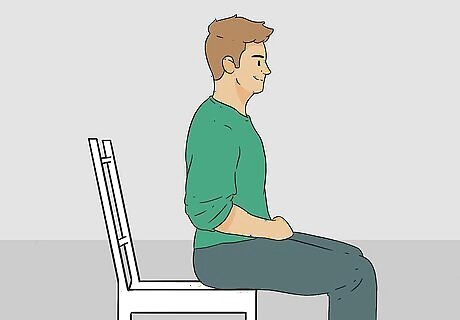
Sit on the edge of your chair. Move forward until your feet are resting flat on the floor and your knees are at right angles. Spread your feet so they are slightly more than shoulder-width apart. This will give you more stability for the twisting exercises that work the obliques, which are the muscles along your sides.
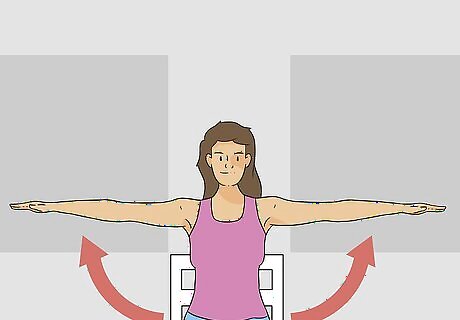
Open your arms out to the side. Extend your arms straight out so that they are parallel to the floor. You can also do this exercise with your elbows bent and your hands resting on your neck. Choose the arm position that's most comfortable for you.
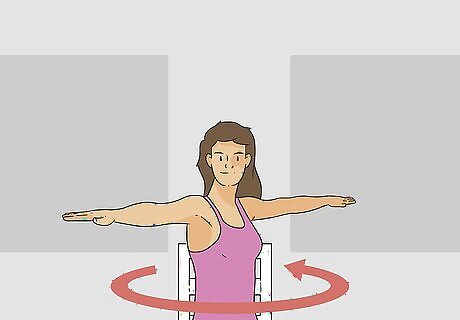
Twist to the left and right. Slowly rotate your trunk, engaging your abdominals and keeping your back flat and straight. Keep your legs and hips straight, twisting from your abdominals. Twist to the right, hold the twist for about three seconds, then return to center, pause, and repeat the twist to the left. Do three to five repetitions of this exercise on each side.
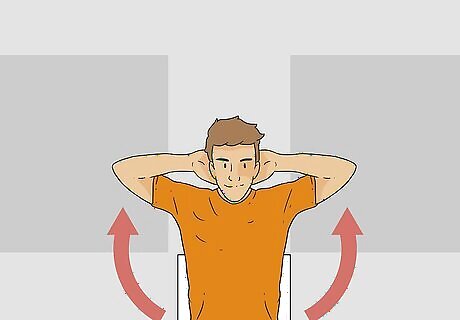
Place your hands behind your neck. From the same seated position, bend your right elbow and rest one hand on your neck. Then, stretch out your left arm and raise it over your head. Take a moment to connect with your breath and check your posture.
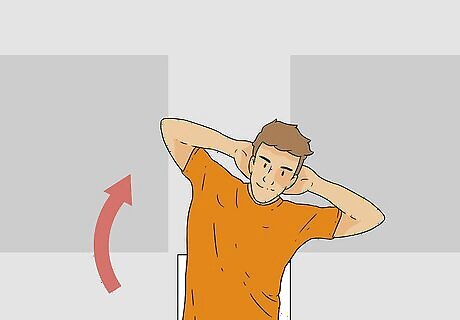
Lower your right elbow to your right hip. Bend your upper body sideways – not forward or backward. You should feel a stretch or a pull along your left side. Only bend to the side until you feel the stretch, without trying to force yourself further. Keep your movement slow and controlled. Hold the contraction for a few seconds, then slowly return to center.
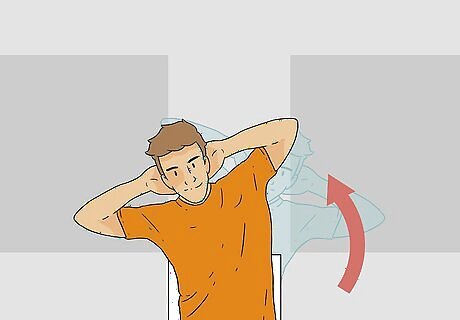
Repeat the same movement with the left side. Lower your left elbow toward your left hip, stopping when you feel a stretch on your right side. Keep your back straight and make sure you're not crunching your shoulders. Pay attention to how the left side feels compared to the right. If you're able to bend further on one side than the other, this may indicate a strength imbalance. Do 5 to 10 repetitions of this exercise on each side, engaging your core continuously.
Adding Advanced Exercises
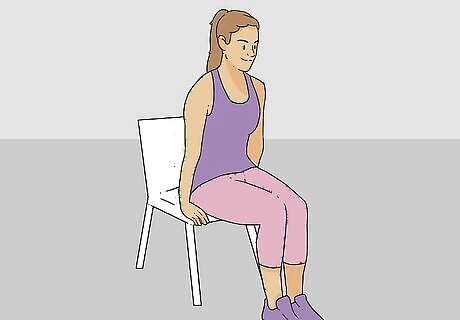
Sit straight at the edge of your chair. Move your feet directly in front of you, keeping them flat on the floor with your knees and thighs together. For this exercise, you need a steady chair on a flat surface. If the chair is wobbly, you may have trouble completing this exercise.
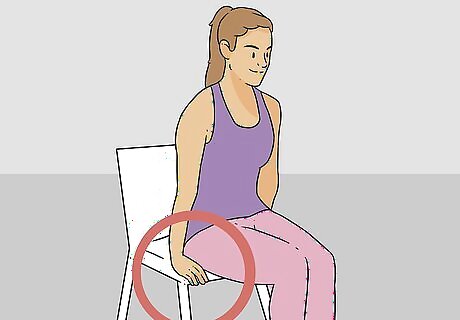
Press your hands on the seat of your chair. You may want to grip the edges of your chair for more stability. You need to be able to grip firmly and balance, so a chair with a seat cushion may not be ideal. Take a moment to connect with your breath as you engage your core.
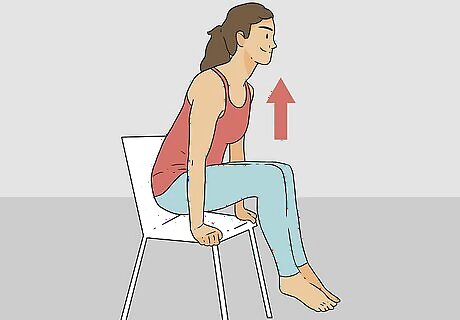
Lift your thighs off the chair with your arms. Flex your core and lift your thighs off the chair. Press down through your arms to lift your thighs off the chair about 1 to 2 inches (2.5 to 5 cm), or as far as you can. Check that your shoulders are back, not hunched forward. If this becomes too easy for you, then try straightening your legs out in front of you, and then lift yourself up so your thighs are not touching the chair.
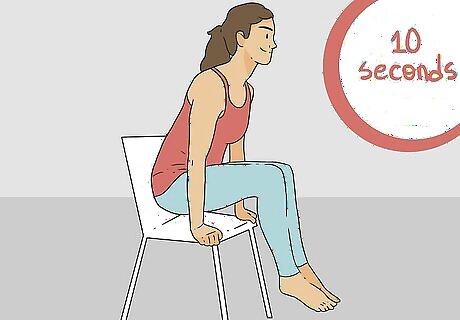
Hold the position for 10 seconds. Breathe deeply, keeping your back straight and keeping your abdominals engaged to hold the position. You can challenge yourself to hold the position longer, but make sure you can continue to breathe deeply.
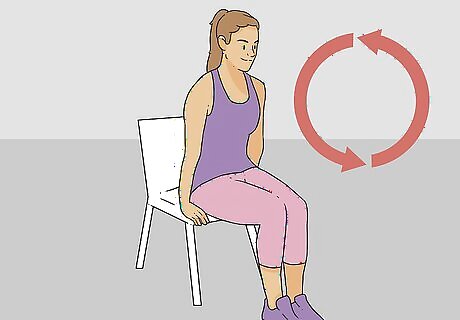
Return to a straight seated position. Lower your feet to the floor with a slow, controlled movement, bringing your body gently back down to the chair. Rest for 10 seconds and reconnect with your breath. Do five repetitions of this exercise.
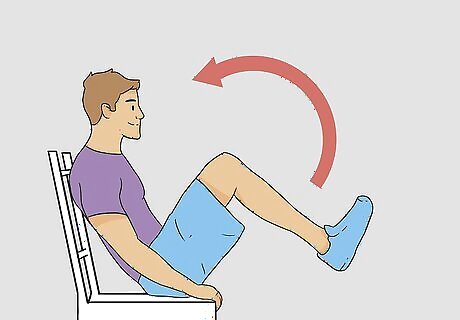
Pull your knees toward your chest on an inhale. From a seated position on the edge of your chair, engage your core and bring your knees to your chest, leaning back slightly. Keep your back straight. This advanced exercise is a variation on a Pilates posture that is normally performed on a mat. Only attempt this exercise if you are able to perform all the other exercises while maintaining proper form.
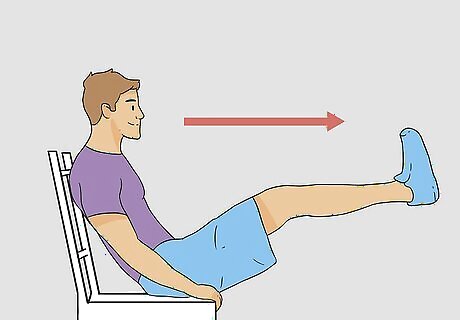
Straighten your legs as you exhale. Lean back, almost to the point of touching the back of the chair, and straighten your knees to point your feet upward. Your legs and body should be in a "V" shape as you balance on your buttocks. Hold the sides of the chair if you need to for stability, or extend your arms out in front of you. You can hold this position for a few deep breaths, engaging your core.
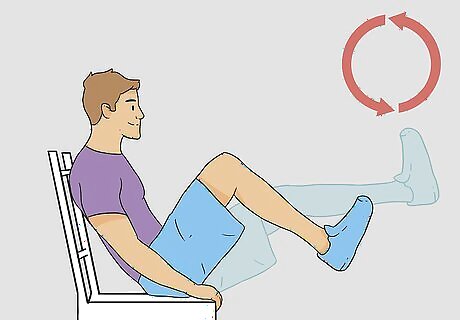
Contract your knees towards your chest. To complete the exercise, bend your knees and draw them up to your chest on an exhale, then extend your legs back out on an inhale. Continue this motion for 10 breath cycles, creating a pumping motion with your legs. Lower your feet to the ground and rest for a minute. Do 2 to 3 sets of this exercise.




















Comments
0 comment